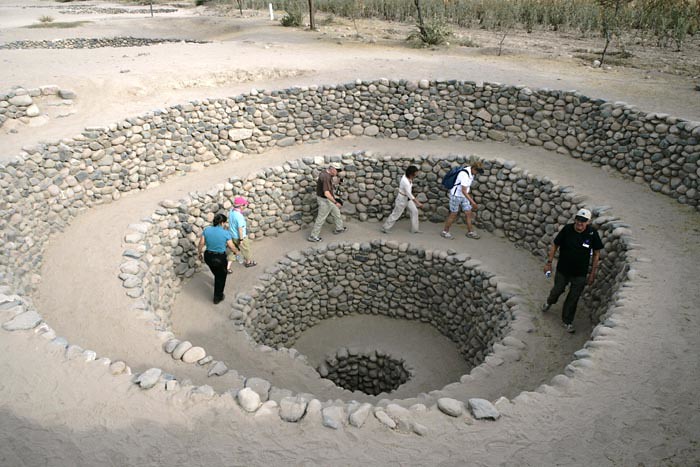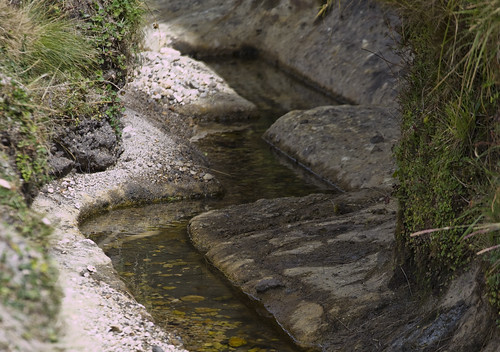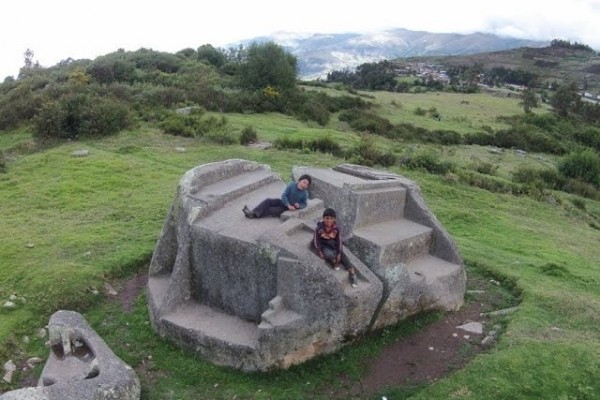Environment & Energy
Related: About this forumPeru is home to ancient aqueducts, and most of them still work
Peru is home to ancient aqueducts, and most of them still work
Mar. 24, 2016, 11:42 AM
Peru's water wells near the city of Nazca are over 1,500 years old. Amazingly, most of these "Puquios" still work.
Story and editing by Jeremy Dreyfuss
Video at:
http://www.businessinsider.com/perus-ancient-aqueducts-work-2016-3
[center]~ ~ ~[/center]
"Puquios" as mentioned in Wikipedia:
The Puquios are an old system of subterranean aqueducts near the city of Nazca, Peru. Out of 36 Puquios, most are still functioning [1] and relied upon to bring fresh water into the arid desert. The Puquios have never been fully mapped, nor have any been excavated.[2]
Debate about age[edit]
[icon] This section requires expansion. (January 2011)
There is conflicting research regarding when the aqueducts were actually built. Some archaeologists contend that they were built by Pre-Columbian Nazca architects around A.D. 540 in response to two prolonged droughts during that time, others doubt that. There is a general lack of historical reference both after and prior to the Spanish Empire. The first historical writing of their existence was in 1605 by Reginaldo de Lizárraga, which some contend may indicate that they were built by the Spanish.[3] There, however, is yet no evidence from Spanish texts that mentions a project to build the Puquios,[4] nor is there evidence in early Spanish texts of water systems being already in place when they conquered the territory.[5]
In their book Irrigation and Society in the Peruvian Desert, Katharina Schreiber and Josue Lancho Rojas explore puquios and show evidence that puquios were constructed by a pre-Hispanic civilization. Monica Barnes and David Fleming on the other hand, argue that Schreiber et al misinterpreted evidence and that there are easier explanations for a construction in colonial times.[5]
Relation to Nazca Lines[edit]
[icon] This section requires expansion. (January 2011)
Another controversy regarding the Puquios, is an assertion made by David Johnson that the Nazca Lines depict maps and pointers to the subterranean aquifers that feed the Puquios system.[6]
https://en.wikipedia.org/wiki/Puquios
(Hilarious, isn't it, when some imagine Spanish people built these puquios, especially when they don't have them in Spain?)
Also posted in the Latin America forum.
haikugal
(6,476 posts)Judi Lynn
(160,515 posts)Judi Lynn
(160,515 posts)[center]


(Not a puquio)


Nazca Aqueduct


 [/center]
[/center]
[center]
https://hiddenincatours.com/drone-view-of-megalithic-sites-in-peru-and-bolivia/
The photo was taken from this video, of drone view, which gives a look at other puquios. [/center]
More wonderful photos in google images:
https://www.google.com/search?q=Peru+Puquios&biw=1659&bih=709&source=lnms&tbm=isch&sa=X&ved=0ahUKEwif2tKB29_LAhXLKiYKHc_TCjcQ_AUIBygC&dpr=0.8#imgrc=_
haikugal
(6,476 posts)It's about time! As you said we have so much to learn! If I could travel this part of the world would be top of the list.
OKIsItJustMe
(19,938 posts)It’s not inconceivable that the Spanish might have used these ancient waterworks as their models (although I am inclined to credit indigenous builders.)
Control-Z
(15,682 posts)Bookmarking. So very cool!
Thank you for posting. I love this kind of stuff.
2naSalit
(86,515 posts)given a lot of ink in the book: 1491:New Revelations of the Americas Before Columbus. Charles C. Mann.
He starts the book with a very detailed view of the rain forest and the aqueduct patterns that are visible under the forest but only from the air. There's a lot of argument about the concept in the anthropological world... as is normal in a field of cats who resist acknowledgement of each other let alone agree on something.
I tend to agree with what I've read in Mann's book in so far as I have read it. I studies cultural anthro in college and have had a fascination for central and south Americas since I was very young, I find this very interesting. Wish I could go do some investigating myself.
brush
(53,764 posts)to an accessible trench?
eppur_se_muova
(36,257 posts)You have to climb down some distance to get to the water table. Similar wells are found in the Old World. Someone posted pix of wells in India with incredible series of staircases leading down to the water.
Some of these aqueducts are channels hewn in granite, by hand. David Yetman visited one of these in "In the Americas".